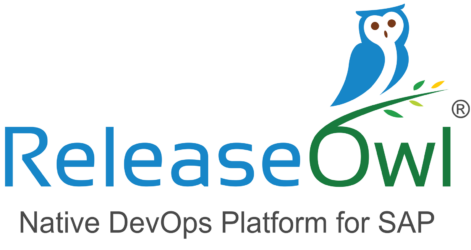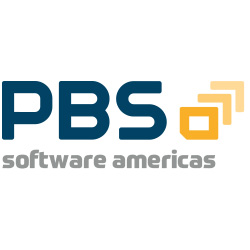SAP Controlling
Filter By
Browse By
- SAP Analytics and AI
- SAP Application Development and Integration
- All SAP Application Development and Integration
- SAP ABAP
- SAP ABAP Development Tools
- SAP ABAP Test Cockpit
- SAP API Management
- SAP BAPI
- SAP Basis
- SAP BRF
- SAP Business Application Studio
- SAP CMS
- SAP Design Studio
- SAP Development Tools
- SAP DevOps
- SAP EAI
- SAP EDI
- SAP Extension Suite
- SAP Fiori
- SAP Fiori Elements
- SAP Integration Suite
- SAP Low Code Application Development
- SAP Low Code Automation
- SAP Netweaver
- SAP Release Management
- SAP UI5
- SAP Web Application Server
- SAP Web IDE
- SAP Business Process Management
- SAP Center of Excellence
- SAP CIO
- SAP Customer Experience
- SAP Data and Data Management
- All SAP Data and Data Management
- SAP BW
- SAP BW/4HANA
- SAP Crystal Reports
- SAP Data Archiving
- SAP Data Center
- SAP Data Governance
- SAP Data Integration
- SAP Data Migration
- SAP Data Quality
- SAP Data Services
- SAP Data Strategy
- SAP Data Visualization
- SAP Data Warehouse Cloud
- SAP DMS
- SAP Document Control
- SAP EIM
- SAP ETL
- SAP ETL Tools
- SAP HANA
- SAP HANA Administration
- SAP HANA Deployment Infrastructure
- SAP HANA Studio
- SAP Master Data
- SAP Master Data Governance
- SAP MDM
- SAP Enterprise Architect
- SAP Enterprise Asset Management
- SAP ERP
- SAP Finance
- All SAP Finance
- SAP Accounting
- SAP AR AP
- SAP Asset Accounting
- SAP Billing Systems
- SAP BPC
- SAP BRIM
- SAP Cash Management
- SAP Central Finance
- SAP Controlling
- SAP COPA
- SAP Cost Center Accounting
- SAP e-invoicing
- SAP FICO
- SAP Finance Automation
- SAP Financial Closing Cockpit
- SAP Financial Consolidation
- SAP Financial Planning
- SAP FX Risk
- SAP General Ledger
- SAP Global Tax Management
- SAP Hyperion
- SAP Order to Cash
- SAP Payment Processing
- SAP Profitability Analysis
- SAP Rebate Management
- SAP S/4HANA Finance
- SAP Universal Journal
- SAP Governance Risk and Compliance
- SAP Human Capital Management
- SAP Intelligent Technologies
- SAP Platform and Technology
- All SAP Platform and Technology
- SAP Business Technology Platform
- SAP Cloud Connector
- SAP Cloud Integration Platform
- SAP Cloud Migration
- SAP Cloud Platform
- SAP Cloud Providers
- SAP Cloud Strategy
- SAP Container Platform
- SAP Digital Asset Management
- SAP Digital Integration Hub
- SAP Digital Signature
- SAP HANA Enterprise Cloud
- SAP HEC
- SAP Hyperscalers
- SAP Infrastructure
- SAP Messaging
- SAP Smart Forms
- SAP Quality and Testing
- SAP Security
- SAP Spend Management
- SAP Supply Chain Management
- All SAP Supply Chain Management
- SAP APO
- SAP Asset Management
- SAP Business Network
- SAP Digital Manufacturing Cloud
- SAP Digital Twin
- SAP EWM
- SAP IBP
- SAP Inventory Management
- SAP Label Printing
- SAP Logistics
- SAP Manufacturing
- SAP Manufacturing Automation
- SAP MES
- SAP MII
- SAP MM
- SAP MRO
- SAP MRP
- SAP Order Management
- SAP Plant Maintenance
- SAP PLM
- SAP Production Planning
- SAP S&OP
- SAP SD
- SAP SPM
- SAP Supply Chain Planning
- SAP Track and Trace
- SAP Transportation Management
- SAP System Administration
SAP Controlling: An Overview and Key Considerations
What Is SAP Controlling?
The SAP Controlling (CO) module provides information to help managers track costs by calculating, analyzing, and planning all enterprise-wide or business-unit overhead spending. The SAP Controlling module operates as the core internal cost accounting solution for SAP customers. In contrast, the SAP Financial Accounting (FI) module is restricted by specific legal requirements, so SAP customers can’t use it for cost accounting.
SAP Controlling: An Overview and Key Considerations
What Is SAP Controlling?
The SAP Controlling (CO) module provides information to help managers track costs by calculating, analyzing, and planning all enterprise-wide or business-unit overhead spending. The SAP Controlling module operates as the core internal cost accounting solution for SAP customers. In contrast, the SAP Financial Accounting (FI) module is restricted by specific legal requirements, so SAP customers can’t use it for cost accounting.
When organizations activate cost center accounting in the SAP Controlling module, SAP Controlling users can make decisions about cost inputs and areas of responsibility with greater clarity. For finance and accounting managers, SAP Controlling offers a variety of components or sub-modules to enable diverse controlling requirements and provide additional functionality.
A list of key SAP Controlling (CO) sub-modules and components include:
- Cost Element Accounting
- Cost Center Accounting
- Internal Order
- Product Costing
- Cost Object Controlling
- Profitability Analysis
- Profit Center Accounting
Key Considerations for SAPinsiders
Reduce financial errors with robust reporting features in SAP Controlling. Controllers should understand how various processes in an accounting system work together to create value for their company. They need a thorough knowledge of what each step entails to identify any errors and address them before the problems grow. Reports that generate controlling activity should be informative and detail any actual/plan variance.
Leverage SAP S/4HANA to enhance SAP Controlling functionality. Organizations can benefit from more robust SAP Controlling functionality in SAP S/4HANA for efficient processing of business activities and financial information from source systems to enhance the performance of operational reporting and dashboards for finance and accounting managers.
Utilize SAP Controlling in Fiori to streamline access to comprehensive reporting and drilldowns. Whether you’re using an older report or the new reports in SAP Controlling with Fiori Apps, they all relate to the Universal Journal. Across various finance use-cases, reporting that previously required custom reports generation can now be viewed with SAP Fiori App, resulting in a user-friendly access point for all information available to the Universal Journal.
500 results
-

 Premium
Premium
Set Up SAP Closing Cockpit for Speedier and Better-Controlled Financial Closings in 5 Steps
Reading time: 19 mins
See how to configure the newly updated SAP Closing Cockpit to assign individual tasks and hierarchies properly. Key Concept SAP recently redesigned its ERP-based SAP Closing Cockpit and plans to deliver it with an add-on option of a new task scheduling tool, Central Process Scheduler (CPS). SAP plans to make this generally available to customers...…
-

 Premium
Premium
cProjects and PS Projects — New Options for Project Accounting in mySAP ERP 2005
Reading time: 14 mins
Learn how you can use new options in cProjects 4.0 to take your project management to the type and level of detail you need. Key Concept While Collaboration Projects (cProjects) 3.0 was the first version to provide accounting integration, cProjects 4.0 offers more ways to track and manage your project costs. You can use the...…
-

 Premium
Premium
Repetitive Cost Accounting in a Production and Process Order Environment
Reading time: 21 mins
Learn how to configure and use product cost collectors (repetitive) to capture and control production and process order costs. Key Concept A hybrid order type for production moves the cost object from the production or process order to a product cost collector. This enables the use of orders for control of production and the aggregate...…
-
-

 Premium
Premium
Provide Parallel Product Costs for Inventory Valuation in the SAP General Ledger
Reading time: 12 mins
See how to take the parallel accounting functionality available in the SAP General Ledger and apply it in CO. You can use it to calculate multiple activity rates and multiple inventory values for your finished goods at period close. This means that although your logistics flows (e.g., goods movements and order confirmations) continue to be...…
-

 Premium
Premium
Integrate cProjects with CO in mySAP ERP
Reading time: 17 mins
Collaboration Projects (cProjects) in mySAP ERP is a project system that allows you to structure projects and manage tasks and resources, yet is integrated with accounting. Learn how to use cProjects in conjunction with the project accounting functions in mySAP ERP Central Component(ECC). Key Concept Collaboration Projects (cProjects) supports phase-based project management and focuses on...…
-

- SAP CS
 Premium
Premium
Effectively Manage Your Customer Service Business Function by Using SAP’s Integrated Service Order Functionality
Reading time: 16 mins
See how service order functionality integrates with the controlling function to record, track, and manage both costs and revenues resulting from service functions for some of the common customer service scenarios. Key Concept Customer service (CS) order functionality helps you capture the desired level of detail pertaining to activities and resources used to carry out...…
-

 Premium
Premium
Leverage the Benefits of Period-Based Accounting for Special Make-to-Order Manufacturing Scenarios
Reading time: 16 mins
Learn about some special manufacturing scenarios in which you can implement a make-to-order (MTO) strategy for repetitive controlling processes and then manage the manufacturing costs for a product by period and not by individual lot size. Key Concept A repetitive manufacturing production process applies to manufacturing sites that are characterized by high volume and continuous...…
-
-

 Premium
Premium
Introduce Budget Availability Control into Cost Center Accounting
Reading time: 14 mins
Learn how you can configure budget availability control for your Cost Centers with simple customizing steps. Key Concept Budget availability control in the managerial accounting (CO) and Project System (PS) modules is a standard SAP functionality that automates budget control through warnings and error messages. It also can send notification emails automatically to respective budget...…
-

 Premium
Premium
How to Use Transfer Prices for Intercompany Inventory Transfers with Standard Functionality
Reading time: 39 mins
Learn how to design a standard SAP solution to meet the business requirement to implement transfer prices or arm’s-length prices between intercompany, parent, or subsidiary inventory transfers. The main business reason for using transfer prices is to ensure that an organization having multiple affiliate companies is not manipulating income taxes by setting up prices over...…
-

 Premium
Premium
Improve Your Variance Analysis by Planning Assembly Scrap
Reading time: 15 mins
Find out how planned assembly scrap in material master views affects cost estimates in Product Cost Planning. Planning and posting assembly scrap removes the value of scrap from the total variance. Only the difference between planned and actual scrap posts as a scrap variance. This improves variance analysis by reducing the variance by the value...…
Featured Insiders
-

Lino Messerschmidt
SAP SE
-

Aric Quinones
Managing Director, Protiviti
-

Javaid Awan
SAP
Become a Member
Unlimited access to thousands of resources for SAP-specific expertise that can only be found here.
Become a Partner
Access exclusive SAP insights, expert marketing strategies, and high-value services including research reports, webinars, and buyers' guides, all designed to boost your campaign ROI by up to 50% within the SAP ecosystem.
Upcoming Events
Related Vendors
Your request has been successfully sent


